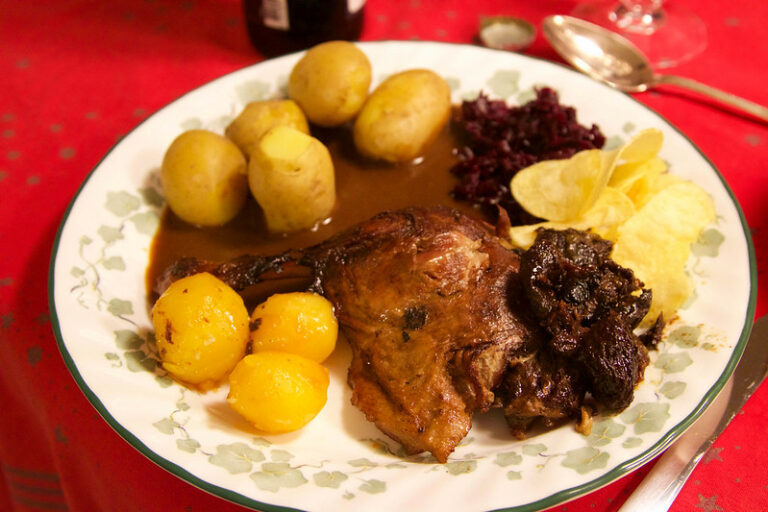Introduction to Danish Cuisine
Danish cuisine is a blend of traditional and contemporary flavors. It is known for its focus on seasonal, local ingredients, especially seafood, meat and dairy products. Danish cuisine is also famous for its open sandwiches, or smørrebrød, which are widely enjoyed for lunch or as a light evening meal.
Danish Cuisine in Historical Context
The history of Danish cuisine is shaped by its geography and climate. The country’s coastal location and cold weather have influenced the use of seafood and preserved foods, such as pickled herring, smoked salmon and meat, and fermented vegetables. Danish cuisine also has a strong agricultural tradition, with meat and dairy products playing a prominent role in its culinary heritage.
Ingredients that Define Danish Cuisine
Danish cuisine is characterized by its use of fresh, seasonal ingredients, especially seafood, meat, and dairy products. Fish such as herring, plaice, and cod feature widely in Danish cuisine, along with meat from pork, beef, and poultry. Dairy products such as cheese, butter, and cream are also staples of Danish cooking. Vegetables like potatoes, cabbage, and beets, as well as fruits like apples and berries, are also commonly used in Danish cuisine.
Classic Danish Dishes to Try
Some of the most popular Danish dishes include smørrebrød, open-faced sandwiches topped with various meats, fish, and vegetables; frikadeller, meatballs made with pork and beef; and flæskesteg, roasted pork with crispy skin. Other well-known dishes include stegt flæsk, pork belly served with boiled potatoes and parsley sauce, and the classic Danish dessert, æblekage, made with layers of apple compote and whipped cream.
Regional Variations in Danish Cuisine
Denmark’s different regions have their own culinary traditions, with local ingredients and specialties. For example, in the western region of Denmark, seafood such as oysters, mussels, and lobster are popular, while the southern region is known for its smoked eel and pork dishes. The island of Bornholm in the Baltic Sea is famous for its smoked herring and pickled sprats, while the northern region of Jutland is known for its sausages and meat-based stews.
Modern Trends in Danish Cooking
Modern Danish cuisine has embraced new techniques and international influences, while still staying true to its traditional roots. Some of the trends in contemporary Danish cooking include the use of sustainable, organic, and locally sourced ingredients, as well as a focus on vegetarian and plant-based dishes. New Nordic cuisine has also gained popularity, emphasizing clean, natural flavors, and simple yet elegant presentations.
Danish Food Culture and Traditions
Food is an important part of Danish culture, with mealtimes being a social occasion for families and friends. Hygge, the Danish concept of coziness and comfort, is also reflected in the country’s food culture, with warm and hearty dishes often enjoyed during the colder months. Danish cuisine also has several festive traditions, such as the Christmas Eve dinner, where families gather to enjoy roast pork, duck, or goose, along with sweet and savory treats.
How to Enjoy Danish Cuisine Anywhere
If you want to experience Danish cuisine outside of Denmark, there are several ways to do so. Many Danish restaurants and bakeries can be found in major cities around the world, offering a taste of traditional Danish dishes such as smørrebrød and pastries like the iconic Danish pastry, or wienerbrød. Danish food products can also be found in specialty stores and online shops, including cheeses, herring, and other preserved foods. Lastly, you can also try your hand at cooking Danish dishes at home, using fresh, seasonal ingredients and traditional recipes.

